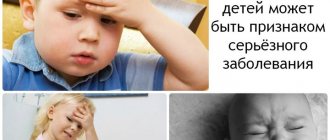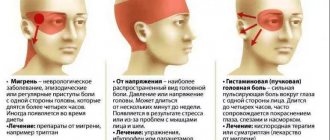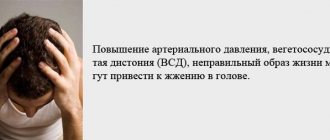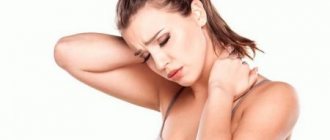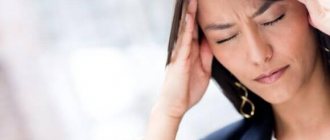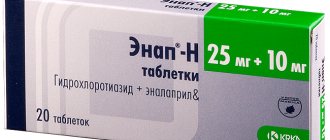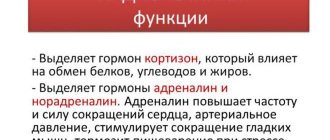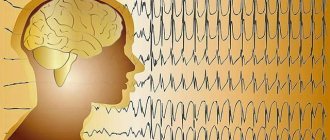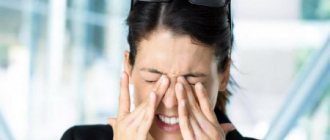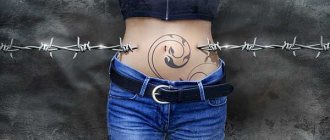Why does the back of my head hurt?
Pain in the occipital region can be primary or secondary.
In the first case, the cause of discomfort may be a benign or malignant brain tumor.
Pain in the occipital region varies depending on the characteristics of the manifestation:
- dull;
- pulsating;
- acute;
- compressive;
- accurate;
- spilled.
The primary causes of short-term and mild headaches in the back of the head are emotional fatigue, stress, negative psychological effects - all these factors provoke the occurrence of a spasm, which disrupts the natural blood flow in the blood vessels of the cervical spine, which causes discomfort.
If the headaches are very severe, then they do not occur without a serious reason, and can signal:
- osteochondrosis;
- hypertension;
- increased intracranial pressure;
- cervical myositis;
- neuralgia of the occipital nerve;
- vascular diseases;
- cervical migraine.
If the cause is cervical osteochondrosis, then the person experiences tinnitus, nausea, and even poor coordination.
If such symptoms occur, you should consult a doctor as soon as possible to prevent destruction of the cervical vertebrae.
Hypertension can cause severe headaches and nausea. In this case, the pain has a pulsating character and is accompanied by angina pectoris. Feeling better may appear after sudden vomiting.
Increased intracranial pressure sometimes occurs due to many factors and is always accompanied by an intensification of the symptom with bright flashes and loud sounds, in addition, heaviness appears in the entire head and discomfort in the eyeballs. Also, VSD can be accompanied by severe headaches in the temples.
Cervical myositis occurs due to hypothermia or injury; discomfort gradually flows from the neck area to the back of the head, shoulders and shoulder blades.
If the cause is neuralgia of the occipital nerve, then a “lumbago” occurs in the back of the head when the position of the head changes.
Which doctor should I contact?
Pain that has been bothering the patient for a long time in any area of the head (occipital, frontal, etc.) is recommended to be recorded in a diary, in which you can note the days, duration and nature of the pain, as well as accompanying symptoms. Data from the diary will help the doctor become better acquainted with the picture of the disease and prescribe the most effective treatment.
The initial treatment for hypertension can be made either to the attending physician or to a neurologist (if the pain is regular and not accompanied by other nonspecific symptoms).
Depending on the clinical picture, consultation may be required:
- surgeon;
- ophthalmologist;
- otolaryngologist;
- oncologist;
- vertebrologist;
Diagnostics
Basic methods for studying the causes of hypertension:
- initial examination and testing (usually performing simple exercises);
- X-ray of the cervical spine;
- Ultrasound of the vessels of the neck and head;
- Blood chemistry;
- MRI of the brain and cervical spine;
- REG, EEG, Echo-EG - for the presence of neoplasms;
- spinal tap.
If you have pain in the cervical and occipital areas, you should consult one of the following doctors:
- neurologist;
- infectious disease specialist;
- orthopedist;
- rheumatologist;
- vertebrologist;
- osteopath.
If the symptoms are general, then you can first contact a therapist, who will prescribe the necessary symptoms to clarify the diagnosis and refer the patient to a specialist.
How to diagnose the disease
If the symptoms become regular or cannot be relieved with painkillers, then it is necessary to undergo examination at a medical institution. Diagnostics includes the following procedures:
- examination by a neurologist;
- blood pressure monitoring;
- EEG;
- MRI;
- CT;
- examination of the fundus by an ophthalmologist.
If the patient has been diagnosed with a brain tumor, a consultation with a neurosurgeon will be required.
Causes and diseases that provoke headaches
The occurrence and development of pain in the neck and back of the head now occurs in almost every fifth person (these statistics were carried out by American scientists in 2020). There are many reasons that can cause headaches, but let’s look at the main ones:
1. Cervical migraine is a fairly serious disease, which often manifests itself in women and is inherited. Men can also sometimes experience migraine attacks, but for them the spasm goes away much easier and less painful;
2. Cervical spondylosis - deformation and growth of osteophytes, which leads to tissue damage, as a result of which they grow into bone tissue and cause pain in the back of the head, while the neck also suffers quite a lot and often hurts. Often this disease manifests itself in older people and those who move little. As a rule, discomfort is observed even with complete rest and relaxation. It is impossible to cope with the disease on your own; you must definitely seek help from a doctor;
3. Osteochondrosis is a rather unpleasant disease, as a result of which the head and neck hurt quite often, but it is better not to try to treat this disease on your own, since only medical attention is needed. You may even need hospital treatment and constant monitoring by a doctor;
4. Myogelosis - in common parlance, this is severe muscle stiffness, most often it occurs precisely because of long and prolonged sitting in an uncomfortable and uncomfortable position (during sleep or in an uncomfortable workplace), changes in posture, as well as drafts quite often lead to to the development of this disease. If the neck and back of the head (generally the back of the head) hurt precisely because of the occurrence of myogelosis, then, as a rule, the pain goes away on its own after a few days, but it is worth noting that a course of professional massage can speed up the healing process, or you can at least try on your own massage and knead the back of the head, paying special attention to the neck area;
Providing first aid for pain in the back of the head
First of all, the person should be placed in comfortable conditions. The sooner first aid is provided for a severe headache, the greater the chance of its effectiveness. There are many ways to relieve headaches. In addition to painkillers, other methods can be used:
- Acupressure.
- Hot shower on the neck area.
- Strong tea.
- Head and neck massage.
- Fresh air.
- Rubbing your neck with a towel.
First aid is likely to be ineffective if the cause of the symptom is not fully understood.
How to overcome pain
The primary task is to accurately determine the location where the pain is. For this, a comprehensive examination is indicated. Pain in the back of the head and in the cervical region can differ significantly.
Pain in these areas differs because there are different groups of nerve endings located there.
Why does the back of my head hurt? The diagnosis should only be made by a specialist after a detailed examination. You cannot treat yourself.
Uncontrolled consumption of analgesics and painkillers can only do harm, worsening your well-being.
If there is pain in any area of the skull, and there is no treatment, allergies, serious damage to the liver and kidneys, and intense bleeding may occur.
The only way you can help when you have a headache is to try to relieve the pain with a small acupressure massage of the shoulder and neck area.
Manual influence will help to more accurately determine the main epicenter of the pain syndrome.
Treatment methods
Treatment of pain in the back of the head depends on the diagnosis made after a diagnostic study; an individual treatment plan is drawn up for each patient. First of all, therapy is aimed at eliminating the primary disease, which became the main factor in the appearance of the unpleasant symptom.
If the pathology does not pose a threat to the patient’s life and does not require surgical intervention, then patients may be prescribed the following measures:
- Physiotherapy – ultrasound and laser therapy, electrophoresis, magnetic therapy.
- Massage.
- Physical therapy to relieve tension and improve blood flow in the neck.
- Acupuncture.
- Therapeutic and diagnostic blockade.
- Radiofrequency ablation of the occipital nerve.
The following types of medications can be used to relieve severe headaches:
- analgesics;
- antispasmodics;
- narcotic drugs are used only in hospital settings and for serious problems.
Pain in the neck and back of the head - causes and methods of combating
Headaches are by far the most common pain for which people most often seek medical advice. Naturally, since all people are different, pain can occur in everyone for different reasons and with different intensity. It is worth noting that some people may experience unpleasant pain quite rarely, while others may experience pain more than once a week. But, it is very important to remember that if attacks of pain begin to bother you more than once a week, then you should consult a doctor as soon as possible, since quite often headaches can be a sign of the presence and development of a more dangerous disease in a person .Headaches can be localized in any part of the head, but pain in the neck and back of the head is the hardest to bear; as a rule, the pain grows and is very difficult to cope with on your own. In fact, there are quite a lot of diseases that can manifest as pain in the neck or back of the head. Today, most often people turn to a doctor for advice with the question “Why do I often have a headache in the back and what should I do?” Let's look at the causes of such pain.
Causes of headaches for which only we are to blame
It is important to remember that quite often the neck and back of the head hurt only because the person himself provokes the occurrence of such pain and only he is to blame for it. Here are some examples of why painful cramping may occur:
1. Overwork - very often manifested by pain in the neck and back of the head, this can especially often manifest itself from prolonged sitting in an uncomfortable position and under rather poor working conditions (for example, poor lighting and an uncomfortable workplace). Office workers and drivers are most often affected. In order to get rid of such an ailment, it is enough to find time for short breaks, do gymnastic exercises and try to always maintain correct and even posture;
2. Stress factors - quite often in such cases, pain occurs in the back of the head and can quickly develop into a severe and painful headache. Often it is women who suffer and most often after 25 years;
3. Hypertension is the most common cause of headaches; it is worth noting that pain most often appears in the morning. In such cases, it is not always necessary to take medication; usually it is enough to have breakfast or drink a cup of coffee, this will help raise blood sugar levels and normalize blood pressure. After this, the pain goes away on its own. In order to avoid such pressure changes, you just need to take care of yourself and measure your blood pressure twice a day.
So it is very important to take care of yourself throughout the day and try to avoid pain triggers. But, if your neck hurts quite often, and at the same time there are spasms in the back of the head, then it is better to immediately consult a doctor in order to promptly find out the cause of such pain.
Massage
Massage is recommended for many diseases. The correct massage technique improves blood circulation, launching metabolic processes, and also stimulates the work of muscle mass. Sessions are carried out in a course; after the procedure, to maintain the therapeutic effect, a neck brace (Schanz collar) is put on for a couple of hours.
For any pain in the back of the head, it is recommended to perform self-massage, which can be taught by a physical therapy instructor. The head massage begins from the ear area. Before the main massage, warm hands massage the ears with rubbing movements. Next, without lifting your palms from your ears, massage the entire surface of your head with light twisting movements. This massage will help relieve the condition and will not cause harm.
Medicines
If it is simply impossible to cope with painful sensations without pills, then you should not try to endure the pain, but you still need to take the medicine. Of course, only a doctor can and should select medications accurately and correctly, but most often it is recommended to take medications such as: spasmalgon, citramon, solpadeine, paracetamol, ibuprofen, no-spa, tempalgin, tamipul, askofen, analgin, aspirin, nise , pentalgin and many others.
It is very important not to abuse medications, since many drugs become addictive and after a while the medicine simply stops working, and in some cases it can even aggravate painful spasms. So first you should try to avoid headache triggers without medications. To do this, you should try to simply lead a correct lifestyle and take good care of your diet (since a lot also depends on proper nutrition). Try to devote more time to yourself and your rest, walk more often and more in the fresh air, eat enough vegetables and fruits, drink enough water (to avoid dehydration), try to get rid of bad habits (if you have them). Over time, you will see that your health has become much better, and headaches appear quite rarely or have stopped bothering you altogether.
Be healthy and don’t forget that health is the most important thing in our lives!
Treatment with folk remedies
Treatment for pain in the back of the head is selected depending on what caused it.
If the pain syndrome manifests itself constantly and continues for a long time, it is necessary to visit a doctor and undergo a diagnostic procedure. Depending on the diagnosis, a course of treatment will be prescribed, which may include physiotherapy, massage, physical therapy, manual therapy or medication.
Traditional medicine, in turn, offers a number of effective recipes that will have an analgesic effect and improve overall well-being. We invite you to familiarize yourself with the most popular and effective of them.
- Hawthorn. As a pain reliever, as well as to relieve dizziness, it is recommended to take a decoction of hawthorn fruits. To prepare it, pour 20 g of berries into 250 ml of boiling water and simmer for 10 minutes over low heat. Cool the resulting product and drink it in one go, preferably in the morning on an empty stomach.
- Mint. Pour one tablespoon of mint into a glass of boiling water. Let the infusion stand for 30-40 minutes, then strain it. Drink 200 ml of warm product twice a day, morning and evening before meals.
- White cabbage . Immediately before consumption, it is necessary to squeeze the juice from the cabbage using a juicer. Take 100 ml of cabbage juice 2-3 times a day after meals.
- Goat willow . The bark of this plant has an analgesic and sedative effect, so decoctions from it effectively relieve pain in the back of the head due to vegetative-vascular dystonia. To prepare a medicinal decoction, you need to pour a glass of boiling water into a tablespoon of dried goat willow bark, which must first be crushed. Boil over low heat for 15 minutes, cool and strain. Take as a treatment 2-3 times a day a tablespoon of decoction.
- Collection of herbs . If the cause of pain is fatigue, overwork or stress, traditional healers suggest preparing the following infusion. Mix chamomile flowers, fennel fruits, peppermint leaves and valerian root in equal proportions. 1 tbsp. l. steam the collection overnight in a thermos, pour a glass of boiling water. Take one glass early in the morning.
- Fragrant geranium . You can relieve the symptoms characteristic of neuralgia with the help of this indoor plant. To do this, geranium leaves should be placed on linen cloth and bandaged to the affected area for two hours. During this period, it is recommended to replace the leaves with fresh ones three times. This compress is used to treat inflammation of the facial, trigeminal and occipital nerves.
- Aloe . Aloe juice is indicated for the treatment of inflammatory processes. The juice is squeezed out of the lower leaves of the plant. You need to take it 1 tsp. 2-3 times a day 30 minutes before meals. Another method of treatment with aloe: mix the squeezed juice in a 1:2 ratio with honey and heat in a water bath, without allowing the product to boil. Take several times a day half an hour before meals. This remedy is also recommended for pneumonia, bronchitis and colds.

